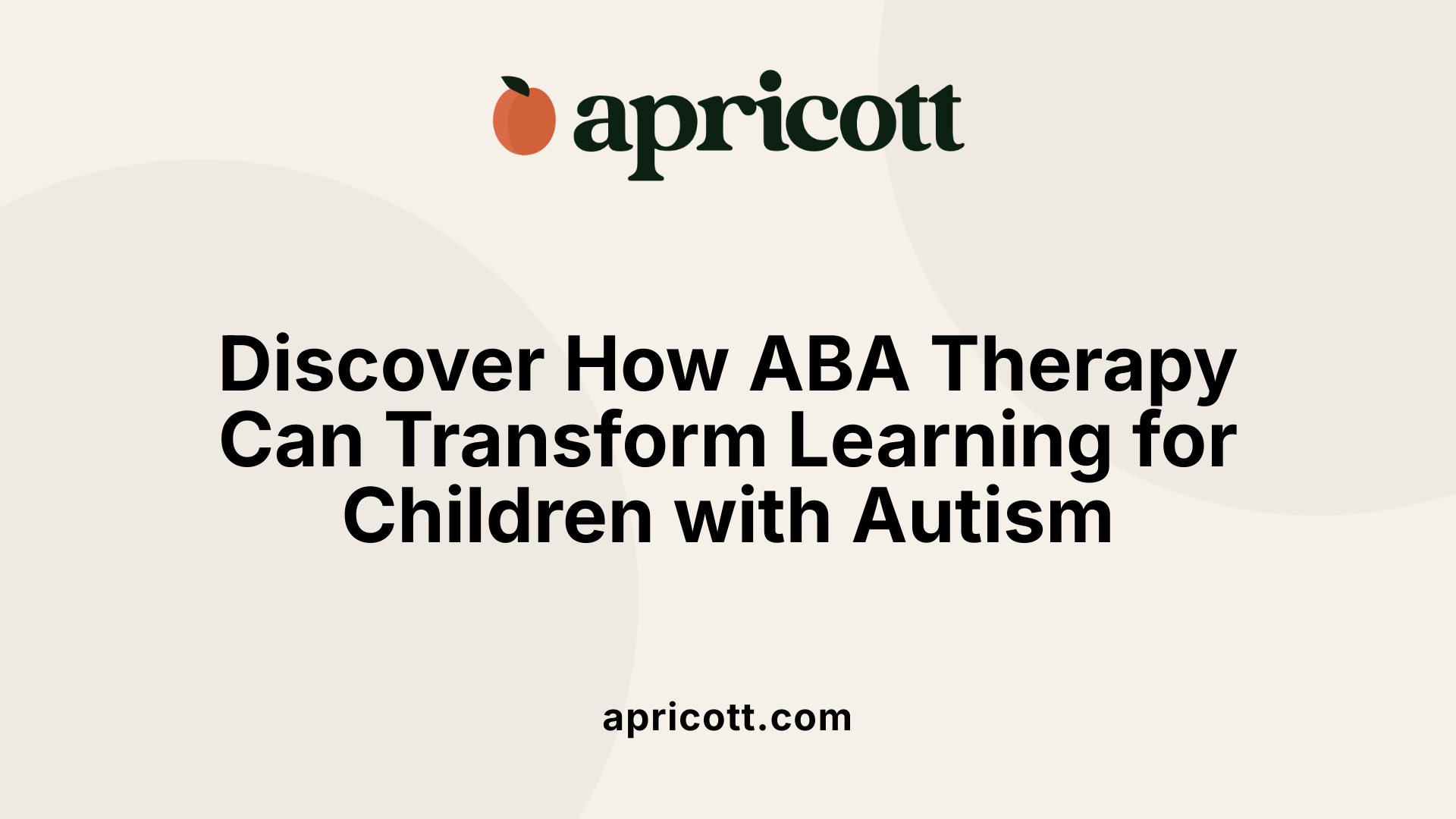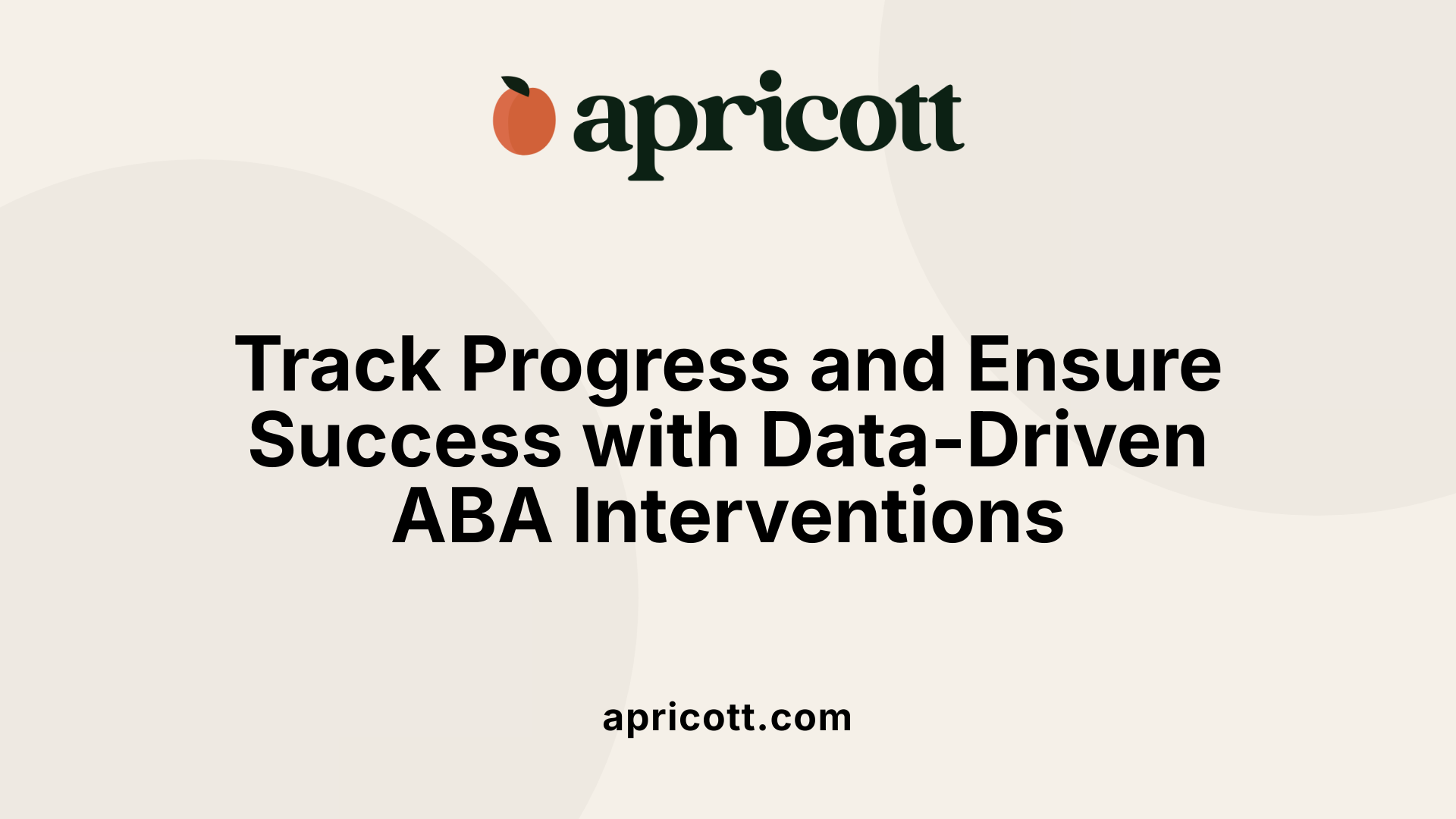Understanding the Unique Benefits of Homeschooling for Children with Autism
Homeschooling offers families of children with autism a unique opportunity to tailor education to individual needs, providing a nurturing and adaptable environment. This approach fosters sensory comfort, structured routines, and personalized learning strategies that can significantly enhance a child's development and wellbeing. By integrating therapies, flexible social opportunities, and parent involvement, homeschooling can become a holistic alternative to traditional schooling, supporting both educational and emotional growth.
The Advantages of Homeschooling for Children with Autism
How does homeschooling provide an individualized educational experience for autistic children?
Homeschooling allows parents to design a learning environment tailored specifically to their child's unique strengths, challenges, and preferred learning styles. This individualized approach enables teachers to focus on areas where the child excels and provide extra support where needed. Educational strategies such as using visual schedules and social stories maximize understanding and communication tailored to each child's needs.
What makes curriculum flexibility important in homeschooling for autistic children?
One of the greatest benefits of homeschooling is the freedom to customize the curriculum. Parents can integrate practical, real-world activities—like cooking or problem-solving—directly into instruction. This flexibility supports a strength-based learning approach, fostering engagement and boosting the child's confidence by focusing on their interests and abilities.
How does homeschooling create a sensory-friendly environment?
Autistic children often struggle with sensory overload caused by bright lights, loud noises, and chaotic school settings. Homeschooling offers complete control over the sensory environment, allowing families to minimize these triggers. Creating a calm and predictable space benefits children by reducing stress and improving focus.
Why are predictable routines important in homeschooling?
Structured routines are crucial for autistic children's wellbeing. Homeschooling supports the establishment of consistent daily schedules, which can help reduce anxiety and create a secure learning atmosphere. Visual supports, like schedules and clear instructions, make routines easier to understand and follow.
How does homeschooling impact anxiety and bullying?
Research shows that homeschooling can reduce anxiety and depressive symptoms for autistic children by providing a safe environment free from bullying. Homeschooled children often feel safer and more secure than their peers in traditional schools, which positively affects their mental health.
What social opportunities does homeschooling provide?
Despite common misconceptions, homeschooling does not limit social interactions. Families can arrange structured and meaningful social experiences through organized playdates, community clubs, homeschool groups, and field trips. These flexible and supportive environments promote authentic relationships that foster social development.
| Aspect | Description | Benefits for Autistic Children |
|---|---|---|
| Individualized Learning | Tailored curriculum and teaching styles | Addresses specific strengths and challenges |
| Curriculum Flexibility | Integration of practical, interest-based activities | Enhances engagement and confidence |
| Sensory Management | Control over sensory stimuli like noise and lighting | Reduces sensory overload and anxiety |
| Predictable Routines | Use of structured schedules and visual supports | Lowers anxiety and improves focus |
| Safe Environment | Reduced exposure to bullying and stressful situations | Improves mental health and sense of security |
| Social Engagement | Opportunities through community activities and groups | Encourages meaningful social development |
Designing Individualized Learning Plans to Meet Specific Needs
Tailoring Curricula to Each Child
Homeschooling offers the unique advantage of tailoring educational curricula specifically to an autistic child's individual strengths, challenges, and learning preferences. This personalized approach allows parents to adapt lesson plans and materials to address specific learning styles, promoting both educational and personal development.
Strength-Based Learning Approaches
Focusing on a child's strengths and interests is central to engagement and confidence-building. By leveraging what the child enjoys and excels at, parents can create motivating and meaningful educational experiences that encourage deeper learning.
Visual Supports and Structured Schedules
Visual aids such as visual schedules and social stories are effective in enhancing communication and understanding for children with autism. These tools create predictability and security, helping to reduce anxiety and improve focus by providing clear expectations throughout the day.
Integrating Therapeutic Activities
Incorporating therapeutic routines seamlessly into homeschooling ensures holistic development. Therapies like speech or occupational sessions can be woven into daily activities, making the learning process fluid and supportive of the child’s overall growth.
Role of Parental Involvement
Active parental involvement is fundamental in homeschooling. Parents not only provide tailored instruction but also continuously monitor progress and adapt teaching strategies to meet evolving needs, ensuring the curriculum remains effective and relevant.
Utilizing External Resources
Parents can supplement homeschooling with external resources including tutors, specialists, co-ops, and community activities. These additional supports foster diverse learning opportunities and promote socialization, enriching the educational environment beyond the home.
The Role of Sensory-Friendly Environments in Homeschooling
How does homeschooling provide control over sensory input?
Homeschooling allows parents to create an environment perfectly suited to their autistic child's sensory needs. They can regulate factors such as lighting, noise levels, and room arrangement to minimize triggers. This control helps prevent common sensory challenges encountered in traditional schools, like bright fluorescent lights and loud ambient noise.
In what ways does homeschooling reduce sensory overload from noise and light?
By adjusting the home setting, homeschooling reduces sensory overload by eliminating harsh lights and reducing sudden or persistent loud noises. Homes can provide quiet, calm spaces that allow children to focus without the distractions and discomfort often present in busy classrooms.
What impact does a sensory-friendly environment have on anxiety and focus?
A regulated sensory environment contributes to predictable routines that decrease anxiety and promote emotional well-being. It helps autistic children concentrate better by lowering overstimulation, which often leads to agitation or withdrawal. This supportive atmosphere encourages engagement and a readiness to learn.
What therapeutic benefits arise from sensory-friendly homeschooling settings?
Sensory-friendly homeschooling integrates therapeutic approaches seamlessly into daily learning. It facilitates a holistic development by combining education with therapies like occupational therapy that address sensory processing issues. This integrated model promotes comfort, reduces stress, and supports progress in both academic and life skills.
Providing Predictable Routines and Structured Supports
Why are routines important for autistic children in homeschooling?
Routines offer autistic children a sense of stability and security. Predictable daily schedules help reduce anxiety by minimizing unexpected changes and providing clear expectations. For children who thrive on consistency, homeschooling allows parents to create and maintain these structured routines tailored to their child’s unique needs.
How do visual aids like schedules and social stories help?
Visual supports such as visual schedules and social stories enhance communication and understanding. Visual schedules break down the day into manageable steps, guiding the child through activities and transitions smoothly. Social stories prepare children for upcoming events or new experiences by explaining what will happen and how to respond, reducing uncertainty and anxiety.
In what ways does predictability reduce anxiety?
Predictability enables children to anticipate what comes next, which is crucial for managing feelings of stress and overwhelm common in autism. When children know the sequence of activities, they feel more in control and less anxious. This can result in improved emotional wellbeing and greater readiness to engage in learning.
How do structured routines improve concentration and engagement?
Structured routines help autistic children focus by establishing clear, consistent expectations. When the learning environment is organized and predictable, distractions decrease, helping children to maintain attention on tasks. This stability encourages active participation and enhances overall learning engagement during homeschooling sessions.
Promoting Mental Health and Safety Through Homeschooling

How does homeschooling benefit the mental health of autistic children?
Homeschooling offers a nurturing and individualized environment that can significantly improve the mental health of autistic children. Research shows that homeschooling reduces anxiety and depressive symptoms often experienced by children in traditional school settings. By tailoring the educational experience to each child's unique needs and strengths, homeschooling helps create a supportive atmosphere that fosters wellbeing.
In what ways does homeschooling reduce anxiety and depressive symptoms?
One of the main ways homeschooling reduces anxiety and depression is through predictable routines and sensory-friendly environments. Autistic children often struggle with sensory overload caused by loud noises, bright lights, and chaotic school environments. Homeschooling eliminates many of these triggers, providing a calm and controlled setting that minimizes stress. Additionally, parents can use visual supports, structured routines, and therapeutic integration to further ease anxiety.
How does homeschooling eliminate exposure to bullying?
Bullying is a significant concern for many autistic children in traditional schools. Studies indicate that homeschooled autistic children experience less bullying and consequently feel safer. Homeschooling removes the child from potential negative peer interactions and instead promotes social development through carefully structured and meaningful interactions such as organized playdates, community clubs, and family activities.
What makes homeschooling a safe and supportive environment?
Homeschooling allows parents full control over both the educational content and the social environment. This control helps establish a safe space free from bullying and sensory overload. Moreover, flexible social opportunities, such as homeschool groups and community meet-ups, support authentic and positive social connections tailored to the child's comfort level. Parents’ high engagement ensures ongoing monitoring and adaptation, enhancing both safety and emotional health.
Together, these factors make homeschooling a powerful option for promoting mental health and safety for autistic children, fostering an atmosphere where they can thrive emotionally and socially.
Facilitating Social Development Outside Traditional School Settings

How Can Structured Social Interactions Benefit Autistic Children in Homeschooling?
Structured social interactions provide autistic children with safe, predictable opportunities to engage with peers. Families can arrange organized playdates, homeschool groups, and supervised activities that focus on social skill-building in a supportive environment. These controlled settings reduce anxiety often experienced in unstructured social scenarios and encourage meaningful connections.
What Role Do Homeschool Groups and Playdates Play?
Homeschool groups and playdates offer a community framework where autistic children can socialize at their own pace. These gatherings, often facilitated by parents, provide chances to practice communication and cooperation in activities tailored to children’s interests and strengths. Such consistent social exposure helps build confidence and friendship.
How Do Community Clubs and Activities Enhance Social Opportunities?
Participation in community clubs and specialty classes promotes diverse social experiences beyond the home. Through clubs, field trips, and local events, children encounter a wider peer group in shared interest settings. This variety nurtures authentic friendships and social learning that general schooling environments may not provide.
Why Is Authentic Peer Engagement Important?
Authentic peer engagement focuses on genuine interactions that honor the child’s preferences and social comfort zones. Flexible social opportunities—like small group activities or targeted meet-ups—support natural social growth without pressure. This approach is essential for autistic children, fostering positive experiences that encourage ongoing social participation and emotional wellbeing.
Overview of Applied Behavior Analysis (ABA) Therapy

What is Applied Behavior Analysis (ABA) therapy?
Applied Behavior Analysis (ABA) therapy is a scientifically supported intervention designed to help children with autism spectrum disorder (ASD) develop important skills while reducing challenging behaviors. Grounded in evidence-based principles of learning and behavior, ABA focuses on understanding how behavior works, how it is affected by the environment, and how learning takes place.
Core principles and goal areas
ABA therapy targets key areas such as communication, social skills, language development, and daily living abilities. The goal is to break down complex behaviors into smaller, manageable tasks that can be taught systematically. Positive reinforcement—rewarding desired behaviors—is central to encouraging skill acquisition and independence.
Typical methods and implementation
Several methods fall under the ABA umbrella. Discrete Trial Training (DTT) involves giving clear instructions and rewarding correct answers while gradually reducing prompts to foster independence. Pivotal Response Treatment (PRT), a play-based approach, emphasizes pivotal behaviors like motivation and initiation of communication to drive broader improvements. Programs are personalized to each child's strengths and needs and involve ongoing data collection to assess progress. ABA interventions are usually delivered one-on-one by trained therapists who tailor strategies to maximize outcomes.
By using structured tasks and positive reinforcement, ABA therapy provides a practical framework to build communication and social competency. It is widely recognized as an effective tool within a holistic approach that may also include schooling and other therapies to support a child’s development and wellbeing.
Common Techniques and Practices in ABA Therapy
What techniques are commonly used in ABA therapy?
Applied Behavior Analysis (ABA) therapy employs several evidence-based techniques to encourage positive behaviors and reduce challenging ones in children with autism. A foundational approach is positive reinforcement, which rewards desired behaviors with incentives or praise to increase their frequency.
Another vital method is prompting and fading. This technique involves giving cues or assistance to help the child perform a behavior and gradually reducing this support to promote independence.
Discrete Trial Training (DTT) breaks down complex skills into smaller, manageable parts taught in a structured, repetitive manner. This method facilitates clarity and mastery of individual tasks.
In contrast, Natural Environment Teaching (NET) embeds learning within everyday activities, helping children apply skills in real-world contexts and enhancing generalization.
Behavior chaining is used to teach sequences by breaking a complex task into steps and training each step in order. Conversely, extinction aims to diminish unwanted behaviors by withholding reinforcement, reducing their occurrence over time.
Other behavior management strategies include modeling, where the child imitates behavior demonstrated by others, redirection, which shifts attention away from problematic behaviors, and script fading, a gradual removal of verbal prompts to encourage spontaneous communication.
Together, these ABA therapy techniques form a comprehensive toolkit that adapts to the individual needs of children with autism, fostering skill development and behavioral improvement in a systematic and supportive way.
Benefits of ABA Therapy for Autistic Individuals
How does ABA therapy benefit individuals with autism?
ABA (Applied Behavioral Analysis) therapy is a highly effective approach for supporting individuals with autism by targeting a wide range of developmental and behavioral needs.
Skill development
ABA therapy systematically teaches essential skills including communication, social interaction, self-care, and academic abilities. Tasks are broken down into manageable steps, allowing children to acquire new behaviors incrementally. Positive reinforcement encourages repetition of desired behaviors, while prompt fading fosters greater independence.
Behavior improvement
This therapy focuses on increasing beneficial behaviors and decreasing harmful or challenging ones. Clear instructions, consistent rewards, and careful monitoring enable tailored interventions specific to each individual's needs and progress.
Communication and social gains
ABA enhances communication by teaching language and social skills using techniques such as verbal prompts and social stories. It also improves social understanding and interaction, helping children engage more effectively with peers and adults.
Early intervention benefits
Starting ABA therapy early, often before age 4, maximizes developmental outcomes. Early Start Denver Model, a play-based form of early intervention grounded in ABA principles, shows notable improvements in social, emotional, and cognitive abilities.
Flexibility of settings and caregiver involvement
ABA is versatile, occurring in clinics, homes, or schools. Involving parents and caregivers ensures consistent practice of learned skills, reinforcing progress within daily routines. Collaboration between therapists and families creates a holistic support system.
Overall, ABA therapy empowers autistic individuals by fostering essential life skills, improving behaviors, and enhancing social engagement, which together contribute to a higher quality of life and greater independence.
Providers and Delivery of ABA Therapy
Who provides ABA therapy services?
Applied Behavior Analysis (ABA) therapy is delivered by trained professionals who specialize in behavioral interventions for children with autism. The primary providers include Board Certified Behavior Analysts (BCBAs), who are responsible for designing, overseeing, and customizing individualized ABA therapy programs.
These programs are then implemented by Registered Behavior Technicians (RBTs) or other qualified therapists working directly with clients. RBTs are supervised by BCBAs to ensure the therapy is consistent with the designed treatment plan.
Specialized companies and clinics focus solely on providing ABA services, offering structured environments and experienced personnel to support therapeutic goals. These providers collaborate closely with families to tailor the program to the child’s unique needs and progress.
Coordination with families and healthcare providers is crucial. This cooperative approach helps facilitate holistic care, incorporating medical, educational, and behavioral perspectives. Families often consult with pediatricians or autism specialists to identify suitable ABA providers and manage therapy integration into everyday routines.
In summary, ABA therapy delivery combines expert-designed plans by BCBAs, hands-on implementation by RBTs, and comprehensive support from specialized clinics, all while maintaining active coordination with families and healthcare teams to maximize developmental outcomes.
Measuring the Effectiveness of ABA Therapy

How is the effectiveness of ABA therapy measured?
ABA therapy's effectiveness is gauged through systematic data collection and careful monitoring of behavioral changes and skill development over time. Therapists track observable behaviors by recording numerical data such as frequency, duration, or intensity, often using charts or graphs to visualize trends and progress.
Objective behavioral measures are essential; they provide clear, quantifiable evidence of a child's improvements or challenges, reducing subjectivity in assessing outcomes. This data-driven approach allows therapists and families to identify specific behaviors that need support or further development.
Regular assessments by qualified professionals help in evaluating progress toward the set goals. These evaluations enable adjustments to the intervention plan, ensuring that ABA strategies remain personalized and effective as the child's needs evolve.
Scientific research supports the positive outcomes of ABA therapy, showing gains in communication, social skills, cognitive functioning, and reduction of problematic behaviors. These evidence-backed results affirm that consistent data review and tailored interventions are crucial for successful ABA therapy.
Through this meticulous process of data collection, objective measurement, and ongoing reassessment, the effectiveness of ABA therapy is continually validated and optimized for each autistic child.
Integrating ABA Therapy within the Homeschool Environment
How can ABA therapy be seamlessly integrated into homeschooling?
Applied Behavioral Analysis (ABA) therapy fits naturally into homeschooling by blending therapeutic practices with daily learning activities. Parents can incorporate structured tasks like clear instructions, prompts, and positive reinforcement directly into their child's individualized curriculum. This integration ensures that therapy sessions do not feel separate but part of consistent education throughout the day.
What are the benefits of combining education and therapy at home?
Combining ABA therapy with homeschooling provides a holistic developmental approach. Children benefit from personalized instruction that targets language, social, and self-management skills while simultaneously addressing academic goals. This method creates a supportive environment that adapts to the child’s pace and strengths, reducing anxiety and improving focus.
How important is collaboration between parents and therapists?
Collaboration is essential for a successful ABA-homeschool partnership. Parents engage closely with therapists by attending progress meetings, adjusting strategies based on feedback, and sharing insights about their child's responses. This teamwork helps tailor interventions effectively, ensuring therapy evolves with the child's needs.
What holistic development benefits arise from this integration?
By integrating ABA therapy within homeschooling, children experience improved behavioral regulation, enhanced communication, better social skills, and increased independence. Incorporating therapy into playful, natural routines fosters emotional well-being while academic learning progresses, creating a balanced and enriching experience.
| Aspect | Description | Benefit |
|---|---|---|
| Seamless Integration | Therapy embedded in everyday learning | Consistent skill reinforcement |
| Combined Education & Therapy | Parallel focus on academic and behavioral skills | Holistic child development |
| Parent-Therapist Collaboration | Regular communication and strategy adjustment | Tailored interventions, responsiveness to needs |
| Holistic Growth | Development of social, emotional, and academic skills | Enhanced overall quality of life |
Legal and Practical Aspects of Homeschooling a Child with Autism

What Legal Requirements Must Parents Fulfill?
In North Carolina, homeschooling parents must adhere to regulations overseen by the Division of Non-Public Education (NCDNPE). This includes submitting a Notice of Intent to Operate a Homeschool that specifies the school's name, address, and the owner's information. This formal notification ensures compliance with state educational laws.
Are There Annual Testing Mandates?
Yes, the state mandates annual standardized achievement testing for homeschooled children. Evaluations focus on core subjects like English, reading, spelling, and mathematics, ensuring that children meet educational milestones despite the flexible homeschooling environment.
What Financial and Resource Challenges Exist?
Homeschooling often involves significant financial considerations. Parents may need to invest in curricula, tutors, or specialists without the direct support typically available in public schools. Access to resources and guidance varies, affecting how effectively homeschooling can be implemented, especially for children with autism who might require tailored methods and support.
How Accessible Are Special Education Services and Scholarships?
Homeschooled children in North Carolina are not eligible for Individualized Education Programs (IEPs) available in public schools. However, limited special education resources may still be accessible through local school districts. Additionally, families can apply for scholarships aimed at supporting educational and therapeutic needs, helping to offset the lack of formal public school services.
Overall, while homeschooling children with autism in North Carolina offers flexibility and personalized learning environments, navigating the legal paperwork, annual assessments, financial burden, and limited access to specialized services requires careful planning and resourcefulness.
Crafting a Nurturing and Effective Homeschool Experience
Homeschooling a child with autism involves thoughtfully designing learning experiences that embrace the child's unique strengths, needs, and challenges. By leveraging individualized curricula, sensory-friendly settings, predictable routines, and evidence-based therapies like ABA, families can foster educational and social growth while supporting mental health and safety. Collaboration with professionals, engaging in community resources, and understanding legal frameworks further empower parents to create a dynamic and supportive environment. Ultimately, this personalized approach offers autistic children the opportunity to thrive academically, socially, and emotionally in a setting attuned to their wellbeing.
References
- Homeschooling Autistic Children: Benefits and Challenges
- Autism and Homeschooling - ABATherapistJobs.com
- Behavioral Therapy for Autism Spectrum Disorder in Children
- Can ABA Therapy Be the Right Choice Instead of School?
- Homeschooling Toolkit - Autism Society of NC
- Applied Behavior Analysis (ABA)
- The effectiveness of applied behavior analytic interventions ...
- ASD Intervention Effectiveness: How Do We Measure ...
- ABA Techniques: Strategies for Behavior Analysts - GSEP Blog
.svg)
.svg)








